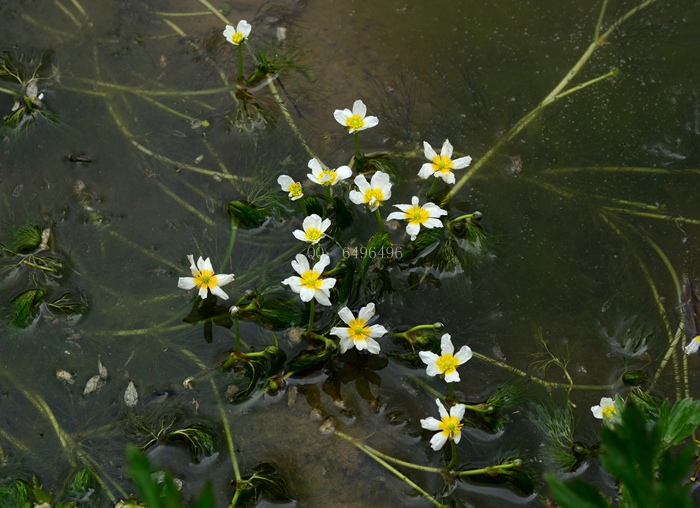- Scientific Name: Ranunculus bungei Steud.
- Ref: Nomencl. Bot., ed. 2, 2:432. 1841
- Synonyms: Batrachium bungei (Steud.) L.Liou; B. bungei var. micranthum W.T.Wang; B. pekinense L.Liou; Ranunculus pekinensis (L.Liou) G.Dahlgren
- Chinese Common Name: 水毛茛 shuǐ∙máogèn, 扇叶水毛茛 shànyè shuǐ∙máogèn
- Family: Ranunculaceae
- Genus: Ranunculus
- Distribution: Ponds, lakes, streams, swamps; near sea level–4900 m. Gansu, N Guangxi, Hebei, SW Hubei, Hunan, N and S Jiangsu, Liaoning, E Qinghai, Shanxi, W and NW Sichuan, Xizang, NW Yunnan, Zhejiang [Kashmir].
- Photo: Yunnan
Herbs perennial, submersed. Stems ca. 30 cm or more, branched, glabrous or sparsely puberulent on nodes. Petiole 4--12(--18) mm, glabrous or sheath abaxially sparsely puberulent; leaf blade flabellate or semiorbicular in outline, 1--2.5 × 1.8--3.5 cm, glabrous, 3-sect; segments 4 or 5 × sect, ultimate lobules filiform, soft, ± collapsing out of water. Flower 0.5--1.8 cm in diam. Pedicel 2.2--3.5 cm, glabrous. Receptacle conical in flower and fruit, puberulent. Sepals (4 or)5, elliptic, 1.6--5.5 mm, glabrous. Petals (4 or)5, white with yellow base or yellow throughout, obovate, 2.5--10 × 1.4--7 mm, apex rounded. Stamens 5--20; anthers oblong, ca. 1 mm. Aggregate fruit subglobose or broadly ovoid, 4--5 × 4--5 mm; achenes obliquely obovoid, 1.2--1.4 × ca. 1 mm, glabrous, with ca. 6 transverse wrinkles. Persistent style ca. 0.1 mm. (Flora of China)
